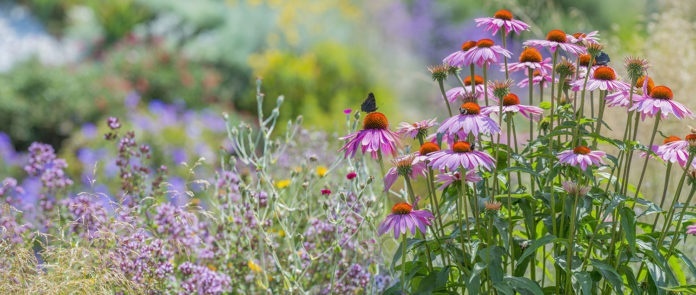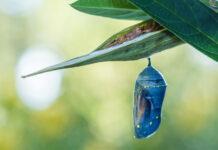Green Earth is a new column on MankatoLIFE. This is the first piece in a multi-part series on pollinator gardens. In the next installments, Molly will be sharing stories from local residents and master gardeners, and even getting some hands-on experience designing and planting one of these gardens herself. In the first installment, she’ll be covering pollinator gardens 101 and the information you need to know to get started.
What’s in your yard? If you’re like the majority of Americans, it’s a grass lawn. Having a lawn means you’ve dedicated hours to mowing, weeding, and fertilizing, or, at the very least, you’ve paid someone else to maintain it. They’re so common and normalized, most of us don’t pause to ask why we have them. But yards weren’t always this way.
The original grass lawns were first cultivated around English and French castles in the 16th century as a status symbol. Having land without needing to grow edible crops on it was a sign of exorbitant wealth.
The lauding of lawns traveled to America. Frederick Olmstead, the “father of American landscape design” and designer of Central Park in New York, as well as the popularity of games like golf and bowls, encouraged the use of grass lawns in the United States. But the real culprit behind the modern yard was Abraham Levitt, the founder of Levittown, which was declared the “ideal” of American suburbia in the 1940s and ’50s. Levitt and his sons created the first cookie-cutter suburb where grass lawns were already put in place before occupants took possession of their home. Lawns were no longer just a status symbol or choice; they were the default.
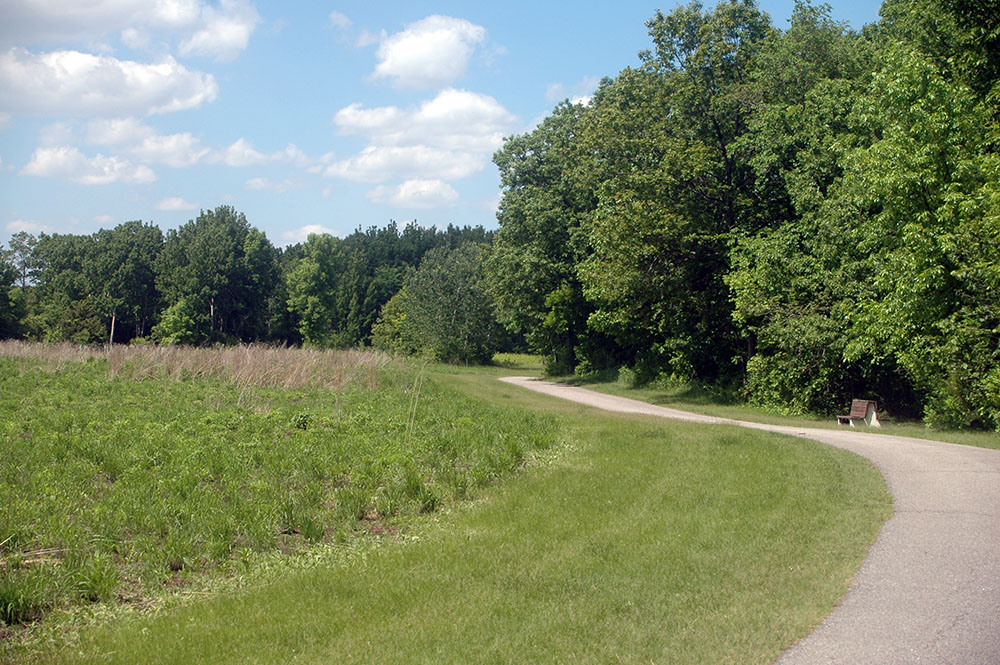
Grass lawns aren’t as pain-free as they seem. They’re quite expensive and require a lot of maintenance. Lawns are the single most irrigated agricultural “crop” in America, and the lawn care industry has swelled to nearly $100 billion dollars a year. But besides looking and feeling pleasant, yards produce nothing. All that watering and maintenance goes literally down the drain.
Why Pollinators Need Your Yard
Before settlers arrived, Minnesota was covered with 18 million acres of prairie, which supported pollinators and wildlife. Today less than 1 percent of that prairie remains. Urban and suburban spaces are dominated by monoculture, i.e. grass lawns. Lawns provide no biodiversity, no food for pollinators and do not benefit Minnesota’s wildlife. Pollinator populations have been declining due to loss of habitat, lack of floral resources and non-target impacts of pesticides.
With miles of urban landscape between a bee and its next flower, these precious pollinators tire out and die. This decline is a threat to our ecosystem and food chain.
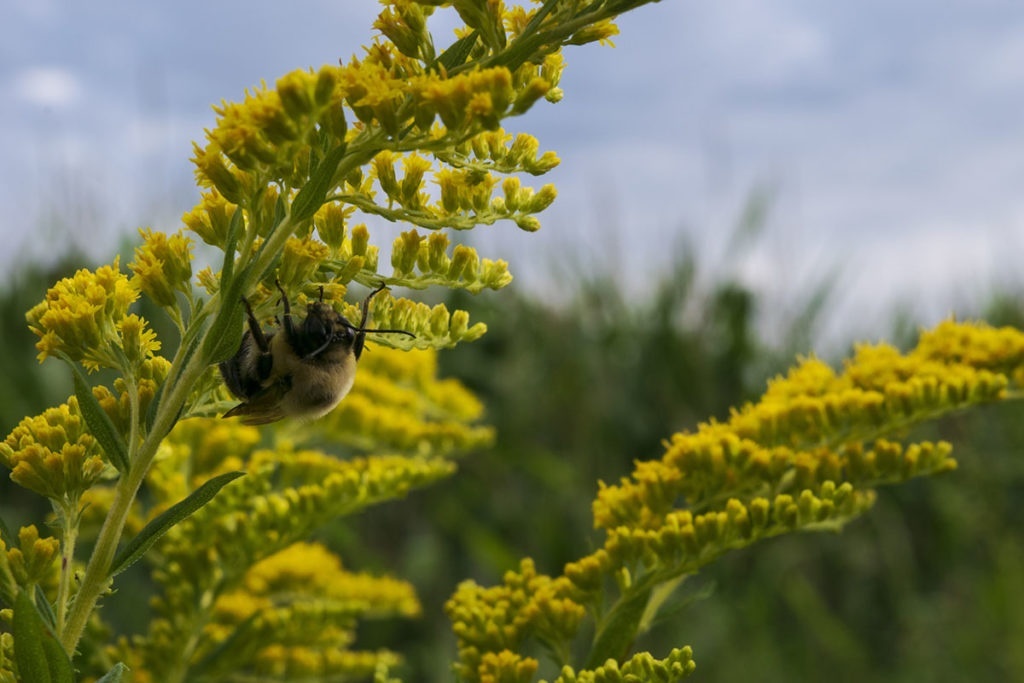
What’s Been Done
Restoration and conservation projects have taken root around our area. Parks like Benson and Bluff Park in North Mankato, Rasmussen and Sibley in Mankato, and the Kasota Prairie all feature some conservation of native plants. But these efforts must grow closer to home if the pollinators are going to thrive.
A flower at a time, our area is slowly becoming more welcoming to pollinators.
Already Minnesotans have taken steps to protect our wildlife. Some area residents and gardeners have reclaimed their lawn in the name of pollinators and have implemented pollinator gardens in their yards. A flower at a time, our area is slowly becoming more welcoming to pollinators.
Lawns to Legumes is a program developed by the Board of Water and Soil Resources (BWSR). It includes workshops, coaching, planting guides and cost-share funding for installing pollinator habitats in residential lawns. Residents like you can apply to be reimbursed for up to $350 in costs associated with establishing a pollinator habitat. Applications for a grant will be open once again in November.
Buzz Kill
Maybe you want to take back your yard. The first question you have to ask is: Can you? The answer is not always clear.
Mankato has a adopted a fairly straightforward stance on pollinator gardens. Simply obey any homeowner’s association if you live under a covenant and keep plants under 30 inches when planting in a right-of-way so that sight lines aren’t inhibited.
Ashley Steevens, with the city of Mankato, says, “Just remember that establishing areas for pollinators does not mean discontinuing general lawn maintenance and that weeds must still be controlled.”
And while there’s no cure for grumpy neighbors, educating on the importance of pollinators and keeping a tidy garden are easy steps to prevent complaints. These gardens can be designed to look like any other landscape bed, and Mankato city staff are “always happy to talk with neighbors if they have any questions.”
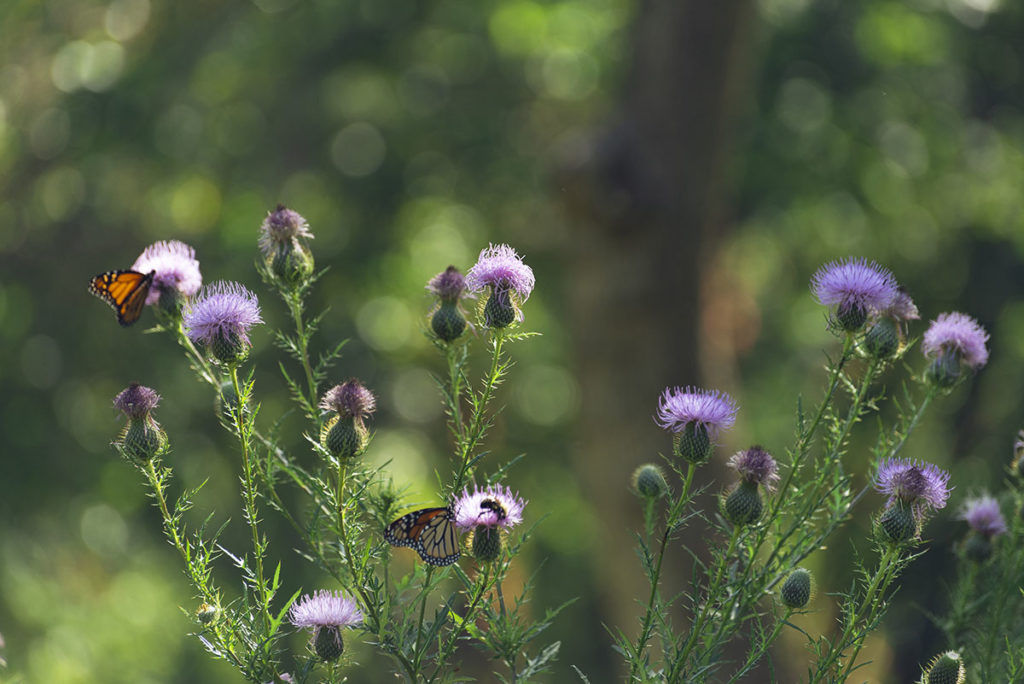
In North Mankato, the debate over pollinator gardens continues to be complex. In 2019, homeowners who had previously had a pollinator friendly lawn were no longer able to maintain it due to their age. After complaints were brought to the city, residents were surprised to find there was no existing pollinator policy. Instead, North Mankato did not allow pollinator gardens, but the city only enforced this when complaints were filed.
In response to this confusion, city officials proposed a policy that would permit natural lawns on 30 percent of the property or 250 square feet, whichever is smaller. Homeowners wanting to replace more of their lawn with pollinator garden would have to submit a plan to the city, as well as get the approval of more than 75 percent of their neighbors. Many residents were uncomfortable with allowing neighbors to have power over their yard, feeling it was an infringement on property rights.
After meeting resistance, the city of North Mankato held public information meetings on pollinator gardens in January.
“Then COVID hit and we discontinued all public engagement meetings,” said Mike Fischer with the City of North Mankato. “I’m guessing that when we are once again allowed to meet in person, we will continue with this effort.”
So, for now, North Mankato residents will have to decide for themselves whether it’s worth incorporating pollinator plants into their yard.
One easy alternative is to plant your pollinator garden in pots, which you can then easily move and maintain without violating any codes. Or, begin with pocket planting: Install just a few plants in corners or along retaining walls, and slowly expand the project with time.
The Ideal Pollinator Garden
According to Alan Ritchie, Pollinator Conservation Coordinator with the University of Minnesota, there are a few things to consider when creating an effective pollinator garden.
“For a pollinator garden to be effective, it needs to provide pollen and nectar throughout the growing season,” Ritchie said. “The typical recommendation is to have at least three or more flowering plant species within each of the bloom periods of the growing season.” But don’t stress about making the perfect garden. As Ritchie pointed out, “Some native flowering plants are better than none!”
A pollinator garden is not simply letting the weeds take over the lawn or forgoing maintenance. These gardens still require some care and supervision to make sure the native plants are not competing with weeds.
Pollinator gardens can be healthful for the environment while also being visually pleasing. Ritchie recommends going for a more natural look and leaving some old stems and fallen leaves. This makes your garden not only less work for you, but also serves to provide natural materials for nesting habitats. A pollinator garden is not simply letting the weeds take over the lawn or forgoing maintenance. These gardens still require some care and supervision to make sure the native plants are not competing with weeds.
The ideal pollinator garden doesn’t just select one pollinator, like bumblebees or monarch butterflies, to benefit, but rather strives to benefit as many pollinator species as possible. Having a wide diversity of flowering plants will help benefit a wider range of pollinators. Ritchie says planting nine different species is a good starting goal. These gardens can take 3-5 years to be fully incorporated into the local ecosystem, so be patient.
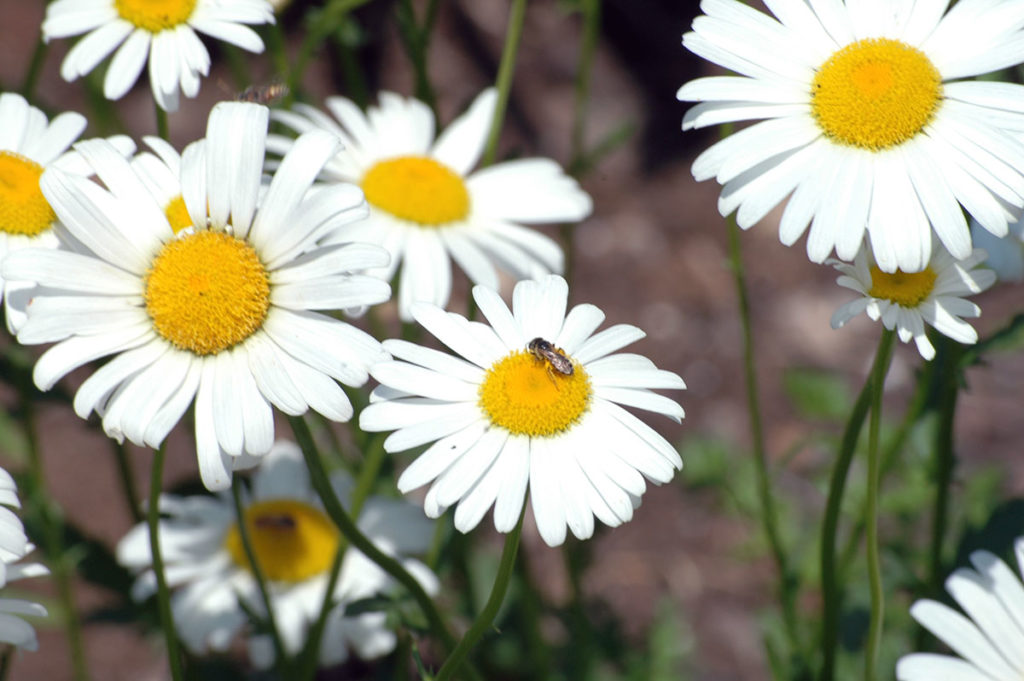
How to Plant Your Own
- Study up – The Board of Water and Soil Resources (the agency behind Lawn 2 Legumes) has created this guide (PDF) to help those interested in strategies and designing a pollinator garden. Inexperienced gardeners can reach out to the local soil and water conservation district office or contact the local master gardener group. You can even send your questions online to Ask a Master Gardener. These resources will help you evaluate your light, soil and water conditions to help pair you with the perfect garden. Sarah Jordan with Xerces recently published this handy checklist for pollinator gardeners.
- Pick your plants – Using Native Plant ID and Native Wildflowers you can find the plants you’d like to see in your yard.
- Contact a local plant supplier – Once you have a better idea of what you want for your yard, it’s time to track down some plants. The DNR maintains a list of native plant suppliers, available here. For Mankato area residents this list includes Drummer’s Garden Center on Saint Andrews Drive and Seed to Site in St. Peter.
- Prepare the Site and Plant – It’s a good idea to cut away and remove any sod in the planting area and lay down a bed of cardboard and mulch to suppress existing vegetation. This way your new plants will have less competition. Containerized plants, as opposed to seeds, are easiest for new gardeners. Plant as directed.
- Monitor and Maintain – Take photos and document your garden. Record the time of planting and any observations so that you can understand your garden better. Avoid using pesticides, since these can harm the very pollinators you are working to protect.
- Spread the word – Your project can be a catalyst for your neighborhood. It’s as simple as posting a “Pollinator Garden” sign on your project, posting on social media or just being open to discussing it with curious neighbors. You can also share you experience on pages like Bumble Bee Watch, Monarch Watch and the Minnesota Bee Atlas.
Ready to get started? In the comments, let me know the steps you’ve taken or will take to host native pollinators, and stay tuned for the next installment of this pollinator series. I’ll be talking to local residents who are already hosting pollinator gardens, as well as area Master Gardeners, and perhaps even planting some pollinators myself.
~~~
Green Earth is a regular column by Molly Butler focusing on a few of her passions: nature and the environment, with an emphasis on Blue Earth and Nicollet Counties.

